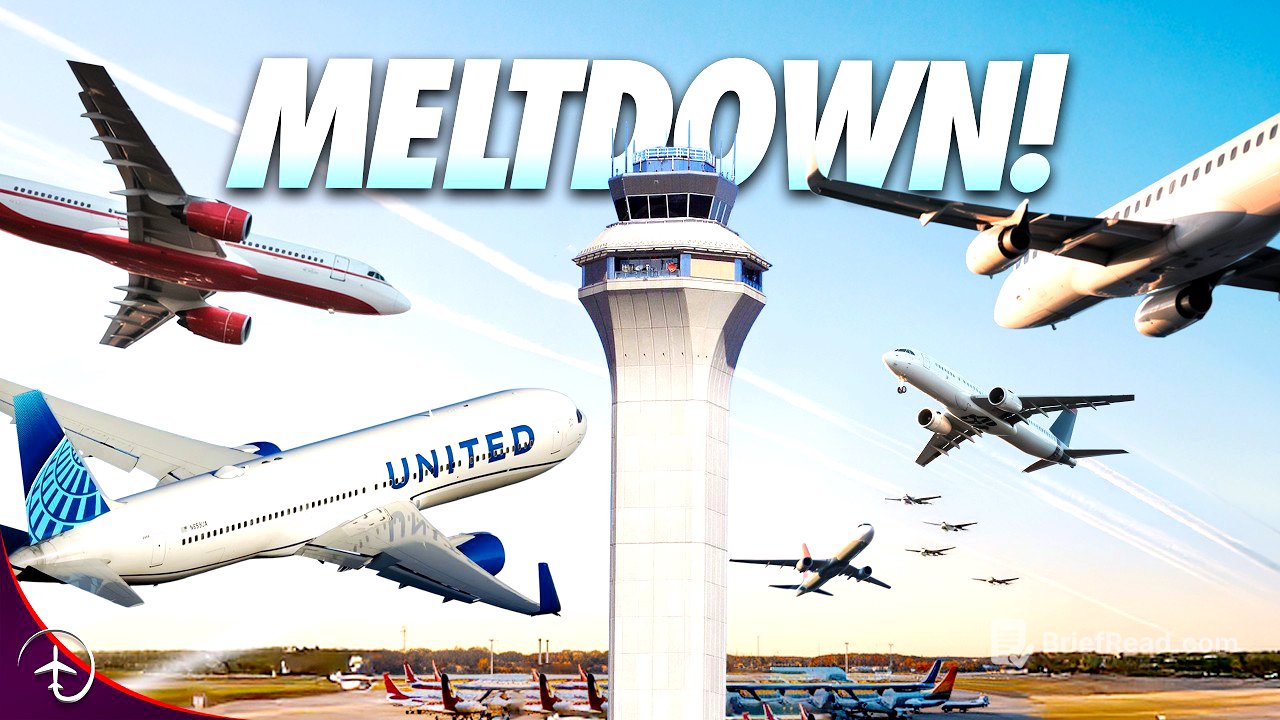TLDR;
This video discusses the air traffic control (ATC) system failure at Newark Liberty International Airport in April and May 2025. It explains the technological and staffing issues that led to widespread flight delays and cancellations, the role of Newark as a "fortress hub" for United Airlines, and the FAA's plans to address these problems. The video also touches on the potential for similar failures at other major US airports and offers advice for passengers on how to prepare for potential disruptions.
- Outdated infrastructure and understaffing caused the Newark chaos.
- Newark is a "fortress hub" for United Airlines, making it vulnerable to disruptions.
- The FAA is implementing short-term and long-term solutions, including technology upgrades and increased staffing.
What Happened at Newark Airport? [0:00]
In April 2025, Newark Liberty International Airport experienced significant disruptions due to a series of technological and staffing failures at the Philadelphia Terminal Radar Approach Controller (TRACON), which manages Newark's airspace. The failures included radar and radio communication outages, leaving controllers unable to see or communicate with aircraft. The immediate cause was a combination of outdated infrastructure, neglected maintenance, and a flawed relocation plan that moved Newark's approach control to Philadelphia in 2024. The FAA connected Philadelphia to Newark using an older copper wire data feed, which experienced bandwidth issues and signal integrity problems, leading to radar outages.
What Happened to ATC Staff at Newark? [10:00]
The Philadelphia TRACON was already understaffed before the outages, operating below the recommended number of air traffic controllers. After the relocation, only 24 of the 33 Newark Area Controllers agreed to move to Philadelphia, leaving the facility further understaffed. The stress levels during the April outage led several controllers to file for trauma leave under the Federal Employees' Compensation Act (FECA), exacerbating the staffing shortage. United Airlines, the largest operator at Newark, cut flights and publicly blamed the FAA and the controller shortage for making the airport unsustainable, while other airlines followed suit, leading to widespread flight cancellations and stranded passengers.
What is a Fortress Hub? [15:00]
Newark Liberty International Airport is a "fortress hub" for United Airlines, meaning that United dominates nearly all the flights, gates, and market share, controlling around 70% of all flights. This allows United to operate a powerful hub and spoke network, with smaller regional flights feeding into Newark, connecting passengers to international and long-haul destinations. However, when the ATC system failed, United's entire operation began to unravel, forcing the airline to cancel 35 round-trip flights per day, roughly 10% of its entire schedule. The cancellations created a ripple effect across United's entire network, leaving passengers stranded with few alternatives, as other airlines have only a minimal presence at Newark.
Can the FAA Fix this? [20:00]
The FAA is taking steps to address the issues at Newark, including calling in experienced air traffic control supervisors from across the country to work in the Philadelphia TRACON and installing three new high bandwidth telecommunication links to provide backup to the outdated copper wiring. The FAA also capped Newark's arrival rate to prevent overload and announced a multi-billion dollar initiative to overhaul the nation's ATC networks, including upgrading radar systems, replacing outdated copper lines with fiber and satellite-based communications, and expanding the next-gen ATC system. The FAA is also ramping up hiring and offering overtime and retention bonuses to keep experienced controllers on the job. One potential change could be making Newark a fully slot-controlled airport, like JFK or LaGuardia, which would mean a more tightly-regulated schedule and more reliable operations.
